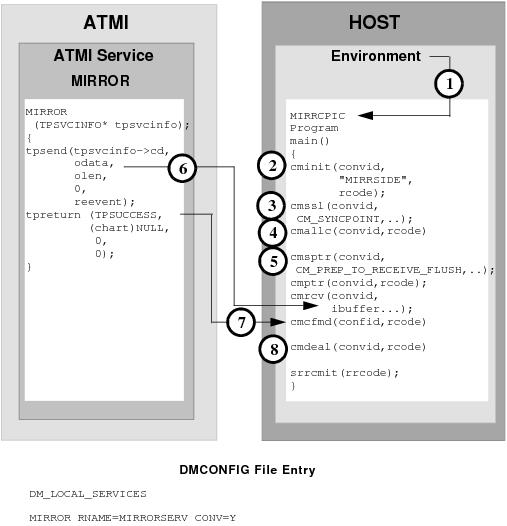2.3.12 Transactional Host CPI-C to ATMI Conversational Server, Client Grants Control
Figure 2-32 DMCONFIG File Entry

- The CPI-C application program
MIRRCPICis invoked using environment start-up specifications. - The
MIRRCPICclient requestscminitto establish conversation attributes and receive a conversation ID that will be used on all other requests on this conversation. The remote server and service are named in the CPI-C side information entryMIRRSIDE. - The
cmsslsets the conversation attributes to sync-level 2 withCM_SYNCPOINT. This allows the ATMI service to participate in the transaction. - The
cmallcrequest initiates the advertised service mapped toMIRRORSERVin the DM_LOCAL_SERVICES section of the DMCONFIG file. - The MIRRCPIC causes the client to relinquish control to the
ATMI server with a prepare-to-receive request. The
cmsptrsets the prepare-to-receive type to CM_RECEIVE_AND_FLUSH. Thecmptrrequest immediately relinquishes control. - The
MIRRORservice sends the data contents of theodatabuffer to thecmrcvibuffer. Thecmrcvreceives a confirm request from the server indicating the conversation should be terminated. - The client replies positively to the confirm request with
cmcfmd. - The
MIRRCPICclient prepares to free the conversation with thecmdealrequest. The conversation in CM_DEALLOCATE_SYNC_LEVEL commits all updated resources in the transaction and waits for the SAA resource recovery verb,srrcmit. After thecommitsequence has completed, the conversation terminates.
Parent topic: CPI-C Programming Examples